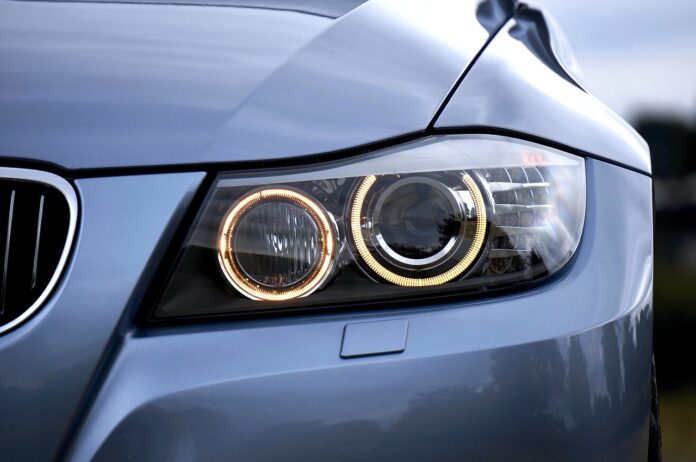Xenon vs Halogen headlights
Well, car owners live in a constant half-breath. It’s their cars. It doesn’t matter the car’s age, the model’s reputation or how keenly you follow it’s maintainance routine. It’s always a breath away from giving you the shock of your lifetime, often very ill-timed.
My first ride, quite new, didn’t waste much time to show me the other side of the coin. Mercifully, it happened at my neighborhood garage. And, unluckily, it’s the local mechanic – a notorious Kawaya – that bore the blunt end of that ugly side.
That first ride was a 2013 Toyota Sienta – a pretty common model on our roads, and a favorite for the breadline budget. She’s on a head-to-head tussle with the Probox for the ‘Most Loved & Abused PSV in Kenya’ title. And, it’s for a reason.
The Sienta is remarkably simple to run, robust and versatile. Good stability, consumption, handling and space – for her budget. However, what shocked the gregarious crowd at the makeshift garage was the technology behind her headlights.
10 things you should NEVER do when driving a manual car
It was a basic run to change a blown bulb. Problem is, my mechanic hadn’t worked on the model before. He’d left engine running, as he fiddled on the open lamp shell.
Meanwhile, I was doing what car owners do at garages – chase clout with fake car stories.
Poof! We heard a loud bang, a flash of light, and smell of burning rubber – the hulk of a man drops like a banana stem! He’d been zapped unconscious, by an electric current!
Thankfully – no one there knew first aid – the man stirs awake some five minutes later.
Question: Kwani what sort of witchcraft happened in that Sienta’s headlights?
A 2013 Sienta boasts the brightest headlights in her class, and, horrendously expensive to replace. The car is quite bland, but has Xenon headlights – whose technology unleashes close to 20,000 volts! All along, I had assumed they were Halogen lights. I was wrong.
What’s the difference between Halogen and Xenon lights?
Halogen headlights
They are common on the roads. They emit a bright, yellow-white light. They are cheaper, in purchase and manufacture. The average lifespan may be around 1,000 hours.
How do they work?
A halogen headlight has a thin tungsten filament engulfed by halogen gas in a glass filament capsule. This capsule is extremely resistant to high temperatures.
It works by sending electricity through the tungsten filament inside the glass capsule. The electric current heats up the tungsten to around 2,500° Celsius. It starts to glow, also known as incandescent process.
Xenon (HID) headlights
Xenon headlights can also be referred to as High-Intensity Discharge (HID) lamps. They emit a white-blue light, almost two to three times brighter than a halogen.
Their lifespan is approximately 2,500 hours. They are quite energy efficient, and common with premium models.
How do Xenon lights work?
An HID lightbulb comes in a transparent quartz housing with tungsten electrodes at each end. It’s filled with a mixture of gases. Unlike halogen, it’s a tad more intricate how they work:
– Ignition stage: A high voltage pulse produces a spark. This spark ionizes the Xenon gas. This connects the current between the electrodes.
– Heating up: Temperatures rise. The gas mixture is ionized, and this lowers resistance between the electrodes.
– Light: The ballast (a capacitor that creates and regulates high voltage) switches to continuous operation with a constant supply of power so the light won’t fail.
Note that Xenon gas is only used at start up to give instant light as the other gases heat up to their operating temperature. Takes a few seconds, give or take.
So, which of the two headlights would you pick
a) Lifespan – Xenon wins.
Xenon lasts longer at 2,000-2,500 hours against Halogen lights at 400-1,000 hours.
b) Cost – Halogen lights win.
Xenon lights cost more to produce, purchase, install and repair.
c) Illumination – Xenon wins
Xenon headlights are over twice as bright as halogen ones, offering approximately 3,000 lumens and about 90 Mcd/m2 compared to 1,400 lumens and about 30 Mcd/ m2 for halogen lights.
The difference in lumens tells you why Xenon illuminates better – but, Xenon headlights loses superiority in foggy weather. So, choice depends on the locality where one intends to drive.
d) Installation – Halogen wins
It’s really simple, with Halogen. They just click into place. Xenon headlights need a ballast, which complicates issues, needs a specialist
(Spare a minute for my mechanic who knew not that he knew not).
Besides, Xenon needs a mandatory light washer at installation. Any dirt on the light module throws off light beams, endagering other road users.
e) Color – Xenon wins
Xenon headlights have a colour temperature of 4000K-6000K, which is a bright white-blue light. That’s almost similar to natural daylight. It’s like driving in the daylight. Halogen headlights have a colour temperature of 3200-5000K – a warmer, yellow-white light.
Irrespective of your choice, it’s prudent to know the significance correct usage of lights has on the overall safety of everyone on the road.
Always keep your lights working well, and optimized for correct direction.
Xenon, especially have been known to dazzle other road users. Always remember to use your automatic beam levelling control and light module washer installations.








